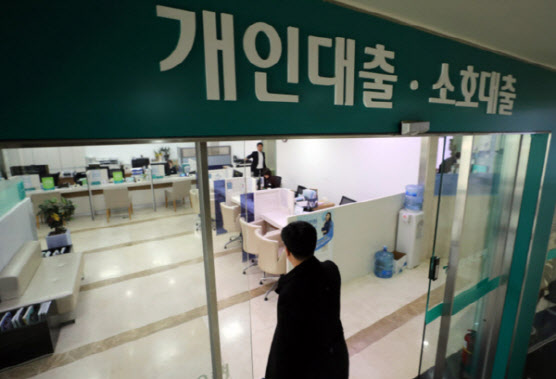|
[이데일리 이윤화 기자] Although the Bank of Korea lowered its benchmark interest rate to 0.5% in August last year, it has been freezing for nine months, but the interest rate on household loans has been on a steep rise since the second half of last year. Amid rising interest rates, banks’ lending attitudes are expected to turn more conservatively due to financial regulator regulations, making it more difficult to obtain loans.
According to the BOK Economic Statistical System on the 8th, the weighted average interest rate for household loans based on the amount of new payments rose 0.24 percentage points (points) in four months to 2.79% in December from a record low of 2.55% in August last year. The rise in household loan interest rates is also on a steeper trend from 0.04 percentage points in August to 0.05 percentage points, 0.08 percentage points, and 0.07 percentage points in four months.
Due to the increase in household loans, the average interest rate for overall loans also rose by 0.03 percentage points from the previous month to 2.74% per year as of December. This is the highest since 2.82% per year in May last year.
As of December, the main reason for the rise in household loan interest rates was general credit loans. As credit loans surged, financial regulation began and interest rates were raised. General credit loans soared 0.64 percentage points from 2.86% to 3.5% during this period. In particular, it rose 0.49 percentage points from 3.01% in November to 3.5% in December. This is the largest increase since September 2012. According to the Federation of Banks, the average interest rate of 18 banks in December was 3.8%, and some credit loans were in the 4-6% range.
|
Mortgage loans also rose 0.3 percentage points from 2.39% to 2.59%, recording the highest level last year.
On the other hand, the interest rate on corporate loans rose only 0.05 percentage points from 2.68% to 2.73% over the same period. As of last December, loan interest rates for SMEs and large corporations increased by 0.02 percentage points and 0.03 percentage points, respectively, and total corporate loans rose only 0.01 percentage points. This is due to the increase in the proportion of loans to large corporations with relatively low interest rates compared to SMEs from 39.2% in November to 42.9%.
The reason for the rise in household loans is due to the fact that the financial authorities tightened the loan regulation as debt surged due to the long-term low interest rate caused by Corona 19. According to the Bank of Korea’s’Financial Market Trends in December 2020′, as of the end of December last year, the bank’s household loan balance amounted to 98.8 trillion won, an increase of 10 trillion won from a year ago. The increase was the largest since statistics were compiled in 2004. The credit balance of the five major commercial banks also increased by KRW 1,591.8 billion in one month to 1,352 trillion won at the end of January. Credit loans decreased by 44.4 billion won in December of last year, but turned to an increase in January.
The financial authorities started to tighten loans, focusing on household loans. Last year, as the banking sector suggested a household loan growth rate management goal of 5-8%, it plans to manage the household loan growth rate goal this year at around 5%. From March, a plan to apply the principle and interest repayment ratio (DSR) regulation on a per borrower basis is under consideration as one of the household debt management measures.
The rise in household loan interest rates is expected to continue throughout the year as well as the beginning of the year. Most of the credit loans are based on variable interest rates, and COFIX, the standard for variable mortgage interest rates, has also risen in recent months. It steadily increased from 0.8 in August to 0.9 in December.
The financial attitude index released last month also appeared more strict on general household loans than for companies. The Bank of Korea predicted that the lending attitude of domestic banks would strengthen in the first quarter of this year. According to the results of the’financial institution loan behavior survey’ released last month, the loan behavior index for household loans recorded’-12′. During the same period, it became the most difficult compared to large corporations (-3), small and medium-sized enterprises (-6), and household housing (-6). If the index is positive, it means that the loan conditions are relaxed, and if the index is negative, it means that the conversely, it is strengthened.


